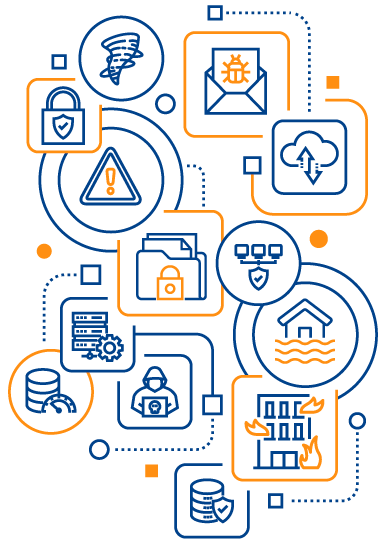Resilience is the Key to Business Continuity
A disaster recovery plan isn’t insurance for everything bad that can happen to your business. But if you want to bounce back when your business meets unfortunate circumstances, having a disaster recovery plan can mean the difference between business continuity or business failure.


What’s a Disaster Recovery Plan?
Imagine what would happen to your business operations if a fire burned down your building, or a water pipe broke and flooded your facility. What if power and internet were down because of a hurricane? What if you were the victim of a cyber-attack? What if an employee accidentally deleted all of your customer information?
A disaster recover plan requires you to think ahead and figure out what you’re going to do to resume operations when your technology (or your whole business) goes down or you have a data loss situation.
A vital component of a disaster recovery plan is data backup and there are different factors that come into play when you’re creating your plan including:
- The total number of hardware and software assets that you have
- The priorities that you set for business functions and associated data
- How long you can afford to be without your data and IT systems
- The potential risks that your organization faces
- The budget you’re willing to allocate to your plan
Our Approach to Disaster Recovery Planning
We provide disaster recovery planning for clients through our Bellwether Managed IT framework. We consult with clients to first help them understand the implications of unexpected downtime to their business if and when their systems go dark, and then create an action plan that allows them to get back up and running.
Key points in our disaster recovery consultations include:

Recovery Time Objective
Length of time that you can be down after a disaster

Recovery Point Objective
Amount of lost data that can be tolerated

On and Offsite Backups
Where and how data will be backed up

Budget
Monetary parameters for the plan